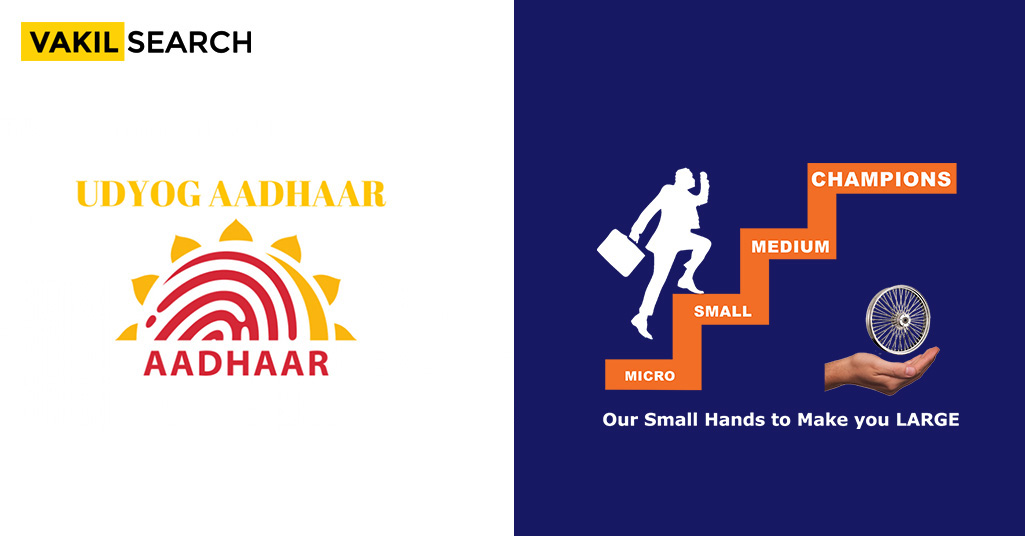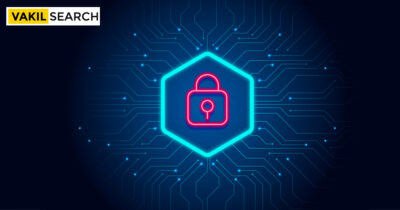There is an online service named the Aadhaar KYC which can be accessed by third-party service providers when they desire to access information about a particular individual. This is known as E-KYC or an Electronic Know Your Customer service. In this article, we will take a look at how to enable the Aadhaar e-KYC Otp verification online .
Overview
Using this service, Aadhaar cardholders can allow the UIDAI to share their details with such service providers to validate their identity. Such specific service providers gain instant access to the Aadhaar details of individuals helping them complete their verification process by using Aadhaar E-KYC Otp. Service providers, such as financial institutions, banks, and telecom companies, make use of Aadhaar e-KYC verification services. In this blog you will get to know more information on Aadhaar E-KYC OTP Verification Online
What is an Aadhaar Card KYC?
Aadhaar Card KYC, also known by the name e-KYC is a compulsory verification process followed by telecom companies and financial institutions. The process allows them to verify the details provided by applicants against their Aadhaar details. Since the Aadhaar card contains demographic and biometric information, it serves as a complete ID proof. Also, since it serves as an ID, address and residence proof, it can be provided for all verification processes and Aadhaar E-KYC Otp.
As a result, to facilitate faster remote verification, the UIDAI has allowed Aadhaar E-KYC OTP norms through the Aadhaar card. Service providers gain access to Aadhaar details directly from the UIDAI, helping them fasten their process of verification and authorization. The adoption of such a feature has helped in modernizing our operations, while also assisting in the maintenance of the required documentation. Customers also get the freedom to choose to disclose their details to such third-party service providers, making the whole process more transparent and flexible.
How it Differs from Traditional KYC Methods
Traditional KYC (Know Your Customer) methods involve manual verification processes, including the submission of physical documents. Aadhaar E-KYC simplifies and expedites this process by enabling individuals to complete verification digitally. This digital approach offers several advantages over traditional methods, such as faster processing, reduced costs, and increased accessibility.
Aadhaar E-KYC Process
There are three ways you can complete Aadhaar E-KYC. The first one is by being physically present during the process. The other two ways are easier and quicker. You can do it online through a One-Time Password (OTP) or using your fingerprints or other biometric verification. Once the verification is done, your information is sent electronically to the service provider.
Aadhaar E-KYC is just as important as any physical document you have. It follows the rules set by the Information Technology Act 2000. Electronic documents are safer than paper because nobody can steal or change information. The Ministry of Finance accepts Aadhaar E-KYC as valid under the Prevention of Money Laundering (PML) Rules.
Aadhaar E-KYC OTP Methods
- There are three different ways using which you can complete the Aadhaar E-KYC verification. The first and most straightforward way is to be physically present during the verification and we get Aadhaar E-KYC Otp.
- The second and third ways allow for remote verification by using OTP and biometric details. In both these cases, the Aadhaar details reach the service provider right after confirmation.
- The IT Act, 2000 gives the E-KYC the same legal significance as physical proof or documentation. Furthermore, electronic documents are sager as they cannot be tampered with, replicated easily or misplaced.
- Also, even the Ministry of Finance accepts E-KYC details under their Prevention of Money Laundering Rules for verification.
What Are the Benefits of Aadhaar E-KYC?
In addition to being paperless and time-efficient, Aadhaar e-KYC offers the following benefits:
- Verified Information: The data extracted from UIDAI’s database is already verified and doesn’t require any further authentication.
- Cost-Free: The e-KYC authentication process is completely free of cost.
- Consent-Based: It is a consent-based process, meaning your details are shared with the requesting party only after you provide your acknowledgment through biometrics or OTP.
- Enhanced Security: You can rest assured that your personal details won’t be compromised. Only registered institutions and agents are allowed to access the Aadhaar KYC online verification facility. Furthermore, the biometric scanners used by service providers are also verified by UIDAI.
- Secure Document Sharing: Digital documents are shared through a secure channel, reducing the risk of illegal document replication.
Impact of Aadhaar E-KYC OTP and Know Your Customer Service
The UIDAI frequently issues reports regarding the number of Aadhaar cards issued to eligible Indians. Since 2013, the number of cards issued has risen by around 40 crores, proving the positive influence of the adoption of such features. Aadhaar E-KYC verification norms impact both users and service providers positively. Not only does it help reduce the paperwork associated with document verification, but it also makes the process faster and more scalable. Such authorities also do not have to store the details you have provided physically as the process is online.
This helps them reduce their maintenance and lower overall operational costs. As UIDAI shares the information directly, the service providers can now store customer information on their server. Such information is accessible at any time. For limited human intervention required, the overall security of the process is also higher. All in all, the Aadhaar E-KYC Otp have helped in making the process of remote verification a lot simpler, faster and more efficient than ever before.
Difference between Aadhaar e-KYC and Aadhaar Authentication
|
Process |
Aadhaar Authentication |
Aadhaar e-KYC |
| Definition | A verification procedure that uses biometric and demographic data stored in the Central Identities Data Repository (CIDR) to cross-check and verify the submitted data. | A process where service providers directly access your private information like name, address, gender, date of birth, etc., from the UIDAI database to establish your identity. |
| Service Provider | Doesn’t have access to your demographic details, which can cause issues. | Can access your private information from the UIDAI database to facilitate identity verification. |
| Speed | Can be slower due to the limited access to information. | Faster and simpler process due to direct access to necessary data. |
| Effectiveness | May face challenges in completing the authentication process. | Enhanced effectiveness in verifying and establishing identity. |
| Benefits | Higher security as service providers don’t access your private data. | Convenient and hassle-free for both customers and service providers. |
| Procedure | Uses data in the CIDR for cross-checking submitted information. | Utilises UIDAI database to directly verify your identity with necessary details. |
| Information | Only basic verification, and limited access to your data. | Accesses name, address, gender, date of birth, and more for verification. |
| Advantages | Ensures privacy but may take more time. | Quicker, simpler, and more efficient process for establishing identity |
How to Complete Aadhaar e-KYC Verification?
-
Online Procedure for Aadhaar e-KYC
You can verify your Aadhaar information online or offline, and both methods are digital, so you don’t need paper documents.
-
-
Via Biometrics Authentication
-
Let’s talk about how to verify your Aadhaar information online using biometrics. It’s easy, and here’s what you need to do:
-
-
- Give your Aadhaar card to the service provider, and they will note your Aadhaar number (or UID, which is a unique identification number).
- The service provider will use a special scanner to read your fingerprint or retinal image.
- This information is then sent to the UIDAI (the organisation that manages Aadhaar), where they check if it matches the data they already have in their database.
- Once the data matches, your identity is confirmed!
-
After this process, the service provider can access your details like your date of birth, address, photograph, and other information they need. The UIDAI also allows the service provider to keep a digital copy of this data on their servers, so they can access it whenever they need to. That’s how you do Aadhaar e-KYC online! It’s quick and convenient.
-
-
Via Mobile OTP Authentication
-
Another option is to use OTP-based authentication, and here’s how you can do it:
-
-
- Show your Aadhaar card to the service provider.
- The UIDAI will send a One-Time Password (OTP) to your registered mobile number.
- Enter this OTP into the device provided by the service provider.
-
Once you do this, the UIDAI will share your details with the agent, similar to how it works in the biometric authentication process. This method is also secure and helps in confirming your identity easily.
-
Offline Procedure for Aadhaar e-KYC
If you can’t use any of the online methods, service providers have an alternative option for offline KYC verification using your Aadhaar. They can do this through the following method:
-
-
By Scanning QR Code:
-
Service providers use a mobile scanner to read the QR code on your Aadhaar card. This allows them to get all your demographic information for completing the offline UIDAI KYC verification. The advantage of this method is that it doesn’t require agents to access the UIDAI’s database directly. It’s a convenient way to verify your details without the need for an internet connection.
-
-
Paperless Method of Offline e-KYC :
-
Another way to complete your Aadhaar e-KYC offline is as follows:
-
-
- Step 1: Visit the official UIDAI portal.
- Step 2: Enter either your UID or VID, along with the security code, and click on “Send OTP.”
- Step 3: Once you receive the OTP on your registered mobile number, enter it and download the Aadhaar XML. This file contains your personal details such as name, gender, date of birth, address, and hashed email and mobile number, digitally signed by UIDAI and protected with a 4-character Share Code.
- Step 4: Hand over this XML file to your service provider, who will use the machine-readable details to verify your identity.
-
By following this process, you can complete your official identification faster and without the need for paper-based verification. It’s a convenient and cost-effective way to get your Aadhaar e-KYC done.
Advantages of e-KYC
- Faster processing time due to online verification and elimination of manual paperwork.
- Cost-effective, reducing the need for physical document storage and manual processing.
- Enhanced accessibility as individuals can complete the process remotely.
- Reduced risk of fraud and identity theft due to secure digital authentication methods.
Advantages of Traditional KYC Method
- Acceptance by individuals who may not have access to digital infrastructure or possess an Aadhaar card.
- Flexibility in document submission, allowing individuals to provide alternative forms of identification.
- Higher level of human interaction, which may provide a sense of trust and reassurance to individuals.
Key Security Features and Precautions to Take While Using Aadhaar e-KYC
Aadhaar E-KYC ensures data security through various measures. Here are some key security features and precautions to consider:
Measures Are Taken to Ensure Data Security
- Encryption: Aadhaar E-KYC employs encryption techniques to secure data during transmission and storage.
- Biometric authentication: Biometric information, such as fingerprints and iris scans, adds an extra layer of security.
- Consent-based access: Individuals must provide consent for service providers to access their Aadhaar details.
- Data protection policies: Service providers are required to adhere to data protection regulations to safeguard user information.
Precautions to Take While Using e-KYC
- Beware of fraudulent websites or phishing attempts: Always verify the authenticity of the website before providing your Aadhaar details.
- Keep your registered mobile number updated: Ensure your registered mobile number is active and secure to receive the OTP for verification.
- Be cautious while sharing Aadhaar details: Share your Aadhaar details only with trusted service providers and authorized entities.
- Regularly monitor your Aadhaar activity: Keep track of your Aadhaar usage and report any suspicious activity to the authorities.
By understanding the concept of Aadhaar E-KYC, its benefits, the step-by-step process, a comparison with traditional KYC methods, and key security features and precautions, individuals can leverage this digital verification method confidently while ensuring their data security.
How to Check Your Aadhaar KYC Status?
If you wish to access financial services, it’s essential to follow the KYC guidelines. If you’re unsure whether you are already KYC compliant, you can check it using the following steps:
- Step 1: Visit the official website of any KYC Registration Agency (KRA).
- Step 2: Enter your Permanent Account Number (PAN) details.
- Step 3: Upon doing so, you will immediately find out if you are KYC compliant. If not, you can complete the procedure by opting for Aadhaar-based biometric verification.
Considering the many advantages of Aadhaar e-KYC, we understand your eagerness to learn about the steps to become KYC compliant. However, we’ll save that topic for another day!
Which Organisations Use Aadhaar e-KYC?
Aadhaar E-KYC is becoming increasingly popular among various organisations for customer verification. Some of the entities that now utilise Aadhaar E-KYC include:
- Trading Accounts
- LPG Service Providers
- Banks and Mutual Fund houses
- Railways
- Stockbrokers
- Stock Exchanges
- KYC Registration Agencies
Conclusion
As a result of our efforts, Aadhaar E-KYC Otp that we hope we have provided you with sufficient information pertaining to your concern; however, if you require additional assistance, please don’t hesitate to leave a comment below or contact us directly.
FAQs
What can be the hindrances faced when opting for online Aadhaar e-KYC?
While online Aadhaar e-KYC is generally smooth, some challenges could be network connectivity issues, delayed OTP delivery, or problems with biometric verification devices.
Do I need to submit any physical copy of my Aadhaar card for Aadhaar e-KYC?
No, Aadhaar e-KYC is a paperless process. You do not need to submit any physical copies. The verification is done electronically using your biometrics or OTP.
How is offline Aadhaar e-KYC more effective than any other offline document verification process?
Offline Aadhaar e-KYC is more effective as it allows instant verification of your details through QR code scanning or Aadhaar XML file sharing. It reduces the risk of forged documents and eliminates the need for physical paperwork.
Can my service provider share my offline paperless e-KYC data with other entities?
No, your offline paperless e-KYC data can only be shared with your explicit consent. The data sharing is limited to the authorised requesting entity, ensuring privacy and data security.










